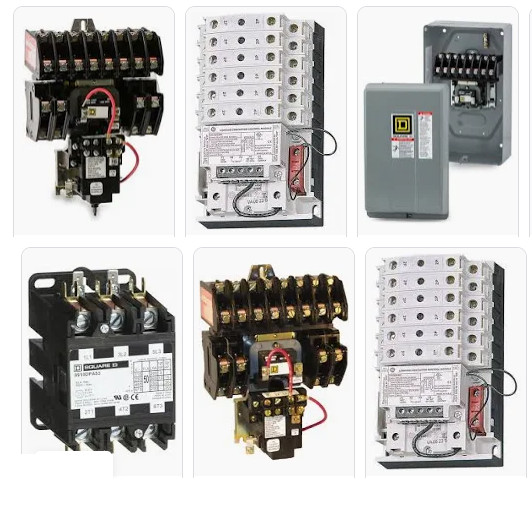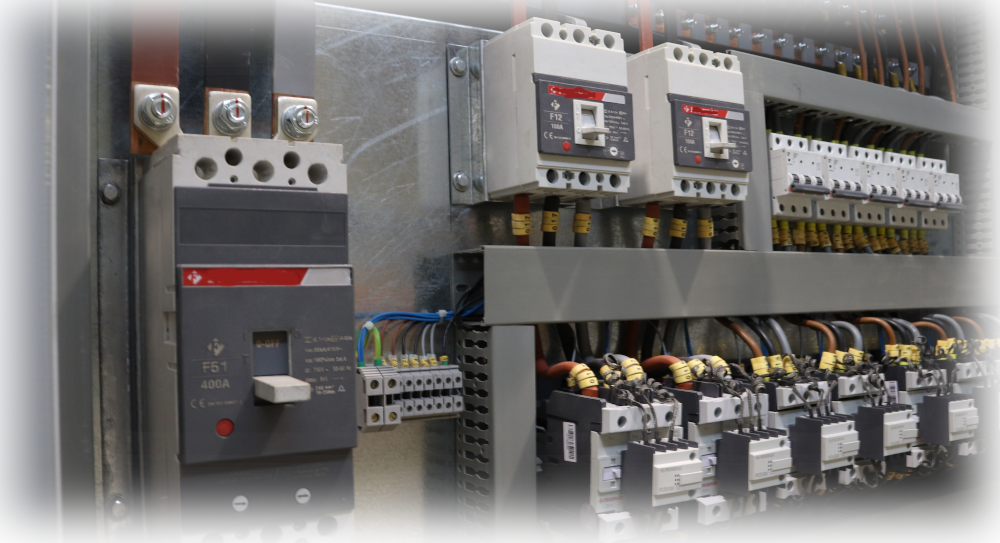Replacing contactors in lighting control isn’t difficult with the right tools and instruction. In this Guide to Replacing Contactors in Your Lighting Control System, we’ll walk you through the key aspects of lighting contactors in this post, explaining their function, how lighting contactors work, how to connect them, and different lighting control types. So, let’s get started!
Need Contactors for Your Lighting Control System?
Get Quote ImmediatelySell To Us
Got Electrical Equipment You Don't Need?

Reduce Your Electrical Inventories & Earn Cash
Sell My EquipmentPanelboard
Need a Panelboard for Your Project/Job?

Our Experienced Sales Engineers Can Help Design the Right Panelboard For You
Learn MoreTransformer Oil Testing
Is Your Transformer Due For Servicing?

Get Your Oil Analysis & Fluid Testing Done By Our NETA-Certified Techs
Learn MoreElectrical Product Resources
Product Training Product Safety Product Guides Product News Featured ProductsLighting Contactors Vs. Other Types of Contactors
When you start researching contactors and replacing contactors in your lighting control systems, you’ll notice that there are many different types available, such as general-purpose contactors, motor control contactors, and, of course, lighting contactors. So, what distinguishes lighting contactors?
Lighting contactors are specifically designed for controlling lighting systems, making them ideal for applications requiring the switching on and off multiple lights. Lighting contactors, as opposed to general-purpose contactors, are designed to handle specific lighting control requirements, such as on-off cycles typical of lighting systems. They also work with a wide range of control voltages commonly used in lighting applications, making them versatile and easy to use.
How Does a Lighting Contactor Work?
Now that you know what makes lighting contactors unique, let’s look at how they work. Lighting contactors are essentially remote-controlled light switches. You don’t manually flip the switch to turn on a set of lights; instead, you use a control component, such as a wall switch or a timer.
The lighting contactor is linked to these control mechanisms. When you turn on the control, an electrical signal is sent to the contactor’s coil. This coil produces a magnetic field that attracts the contacts of the contactor. When the contacts make contact, the electrical circuit is completed, allowing power to flow to the lights. It’s just as simple to turn off the lights.
When you turn off the control, the coil is de-energized, and the magnetic field is no longer present. The contacts separate as a result, breaking the electrical circuit and turning off the lights.

Connecting a Contactor to Your Lighting Control Panel
Let’s look at how to connect a lighting control panel contactor. Here’s a step-by-step tutorial for replacing contactors in lighting control systems:
- Make sure that the power to the lighting circuit is turned off. Follow proper safety procedures and, if necessary, use personal protective equipment.
- To access the Control Panel, follow these steps: Remove the control panel or enclosure containing the contactor. To remove the panel cover, you may need to use tools.
- Choose the Correct Contactor: Make sure you’ve got the correct replacement lighting contactor for your lighting system’s voltage, current rating, and control voltage.
- Mount the Contactor: Using appropriate hardware, secure the contactor to the panel’s mounting surface. Make sure it’s securely fastened.
- Connect the Wiring: Connect the line wires from your power source to the contactor’s main contact terminals, as shown in your wiring diagram.
- Test the System: Turn on the power and test the system before closing the panel to ensure the contactor engages and disengages correctly. Check that the lights turn on and off as they should.
- Close the Lighting Control Panel: When you’re finished connecting and testing, securely close the control panel or enclosure. Organize all wires.
- Labeling: For easy identification and future maintenance, consider labeling the contactor and wiring connections.
Remember to always follow the manufacturer’s instructions and to seek advice from a qualified electrician if you are unsure about any step. When working with electrical systems, safety, and proper wiring are critical. Are you looking to wire a lighting contactor? Checkout our Guide to Wiring a Lighting Contactor.
6 Types of Lighting Controls for Your Panelboard
Let’s look at different lighting control types you’ll find on lighting panelboards now that you know how lighting contactors work and how to connect them. Lighting control is a broad topic and different systems provide different features and benefits:
Manual Lighting Control: This is the most basic type of lighting control, in which you use switches or dimmers to turn lights on and off. It is common in residential and small commercial settings.
Timers: Can be used to turn lights on and off at predetermined times automatically. They are frequently used for outdoor and security lighting, as well as to create the appearance of occupancy in vacant properties.
Occupancy sensors: Detect movement or the presence of people in a space. When no motion is detected, the lights turn off automatically. Occupancy sensors are commonly used to save energy in offices, restrooms, and warehouses.
Daylight Harvesting: This system adjusts lighting levels based on the amount of natural daylight available. Sensors detect ambient light and adjust artificial lighting to minimize energy consumption.
Building Automation Systems (BAS): BAS is a system that integrates various building systems, such as lighting, HVAC, and security. Based on occupancy, time schedules, or environmental conditions, it enables centralized control and automation.
Wireless Lighting Control: Use radio frequency signals to communicate between control devices and lighting fixtures. They are adaptable and scalable, making them ideal for retrofit projects.
Understanding these lighting control types can assist you in selecting the best solution for your specific needs and preferences, whether you want to save energy, increase convenience, or improve security.

6 Questions to Ask When Replacing Contactors in Your Lighting Control System
Q: How do I choose the best replacement lighting contactor for my needs?
A: Follow these steps to find the best replacement lighting contactor:
- Voltage and Current Ratings: Check that the contactor’s voltage and current ratings match the voltage and current ratings of your lighting system.
- Control Voltage: Check that the contactor’s coil voltage matches the voltage in your control circuit.
- Contact Configuration: Verify that the contactor’s contact configuration (normally open, normally closed) meets your control requirements.
- Enclosure Type: Choose an enclosure type that is appropriate for your installation environment, whether indoors or outdoors.
- Size and Mounting: Take into account the physical dimensions as well as the mounting options to ensure that it will fit in your control panel or enclosure.
- Ampacity: Match the ampacity (rated current capacity) of the contactor to your load requirements.
Q: What are the most important specifications to look for when replacing a lighting contactor?
A: The following are the key specifications to consider when replacing a lighting contactor:
- Coil Voltage: Make sure the coil voltage in your lighting system matches the control voltage.
- Contact Ratings: Check the contact ratings of the contactor, including the maximum current and voltage it can handle.
- Contact Configuration: Determine whether the contacts are normally open (NO) or normally closed (NC) and select the appropriate option based on your control requirements.
- Enclosure Type: Choose an enclosure type that is appropriate for your installation environment, such as NEMA-rated enclosures for outdoor use.
Q: Do I need to make any wiring or control changes when replacing a lighting contactor?
A: Whether or not wiring or control changes are required during replacement is determined by the specifications of the new contactor. Examine the wiring diagram for the replacement contactor and compare it to the existing configuration. Make any necessary adjustments to match the coil voltage and contact configuration of the new contactor.
Q: How can I be certain that the new contactor will fit into the existing enclosure or panel?
A: To ensure that the new contactor will fit in your existing enclosure or panel, do the following:
- Compare the physical dimensions of the replacement contactor to the available space.
- Examine the mounting options and ensure they are compatible with the mounting provisions of your enclosure.
- Consider additional accessories or mounting brackets are needed to ensure a secure fit.
Q: Should I perform any maintenance or inspection tasks while replacing the contactor?
A: When replacing the contactor, keep the following maintenance and inspection tasks in mind:
- Inspect the Wiring: Examine the existing wiring for signs of wear, damage, or loose connections. Replace or repair any faulty wiring.
- Clean Connections: To ensure proper electrical contact, clean the terminal connections.
- Examine the condition of the control panel or enclosure, paying special attention to any damage or corrosion.
- Label all connections clearly for easy identification and future maintenance.
Q: How long will the new lighting contactor last, and how can I make it last longer?
A: The expected lifespan of a lighting contactor varies depending on usage and environmental factors. To increase its longevity:
- To prevent wear and tear, perform routine maintenance, such as cleaning and inspecting contacts.
- Use Appropriate Enclosure: Make certain that the contactor is housed in an enclosure that is appropriate for its environment, protecting it from dust, moisture, and extreme temperatures.
- Overload Protection: To prevent damage from excessive current, consider installing overload protection devices.
- Manufacturer Recommendations: Follow the manufacturer’s recommendations for operation, maintenance, and replacement intervals.
Need Help Choosing the Right Lighting Contactor?
When you have the right tools and guidance, replacing contactors in your lighting control systems can be a straightforward task. This guide has given you a basic understanding of lighting contactors, their functionality, operation, and how to connect them, as well as lighting control types. A Relectric customer service representative can help you find the right contactors for your lighting control project. Need Help? Call 800.497.6255
